If you talk to anyone in the outdoor education business – talk about props. Talk about the rubber chickens, the stuffed animals, the rope, the spots, the foam thingies… props have been the underestimated “magic items” facilitators use to distract participants one way while getting them to step outside their comfort zone the other way.
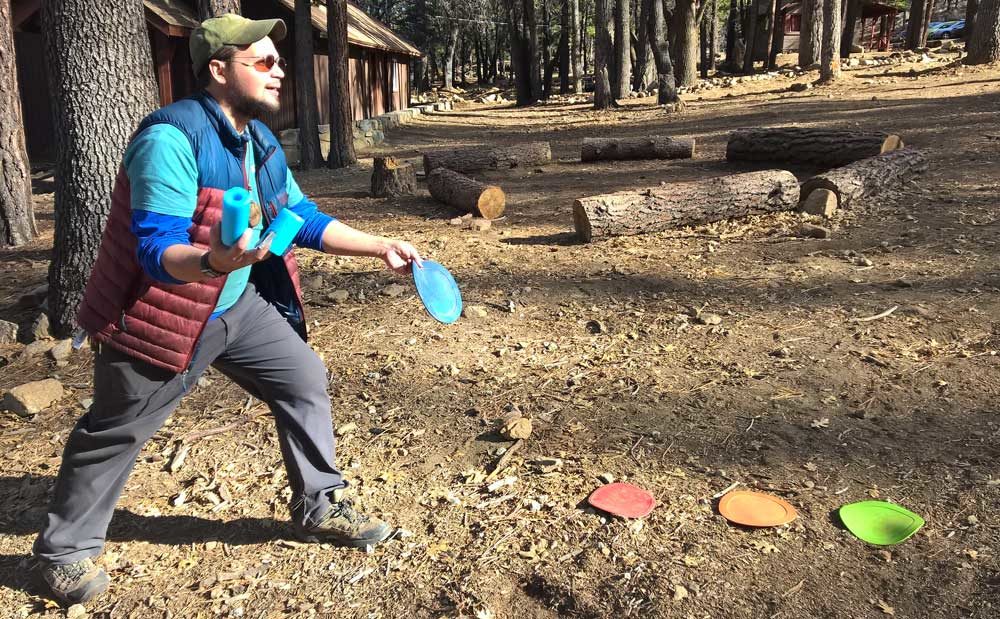 However, step into a good teacher’s classroom and you will also find “props”: albeit often times these are called visual aids or classroom accessories. Posters on the wall, laminated signs telling students what is where and where they can and can’t.
However, step into a good teacher’s classroom and you will also find “props”: albeit often times these are called visual aids or classroom accessories. Posters on the wall, laminated signs telling students what is where and where they can and can’t.
Props is a term borrowed from the theater world – A property, commonly shortened to prop (plural: props), is an object used on stage or on screen by actors during a performance or screen production. In practical terms, a prop is considered to be anything movable or portable on a stage or a set, distinct from the actors, scenery, costumes and electrical equipment.
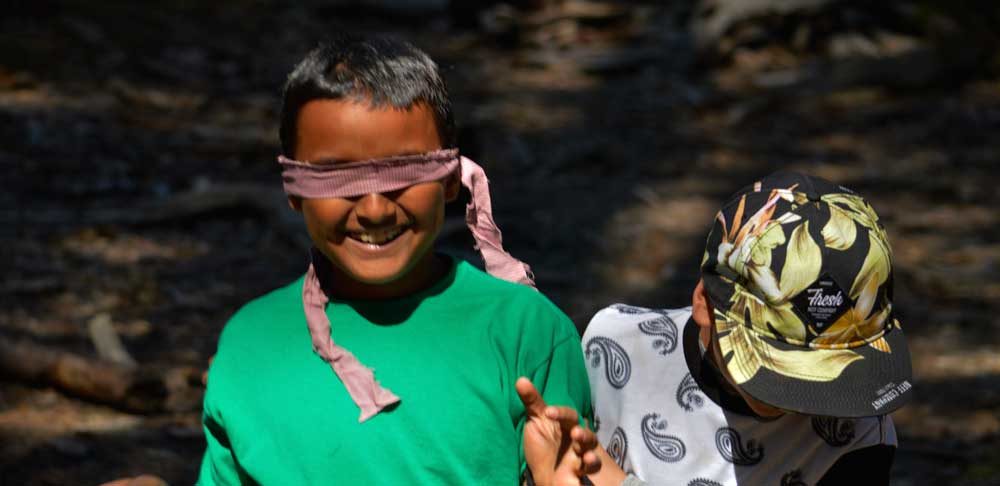
Simple piece of cloth, great blindfold prop
In outdoor education, props are the portable things we carry – distinct from the setting, the gear we need to wear, and the practical supplies we need for safety (think drinking water, food, and first aid kit).
At High Trails, we strive to navigate a course between the facilitator and the educator. In that regard, quality teaching props are essential. However, we must decide for ourselves where we draw the line between the practical, the versatile, and the personal.
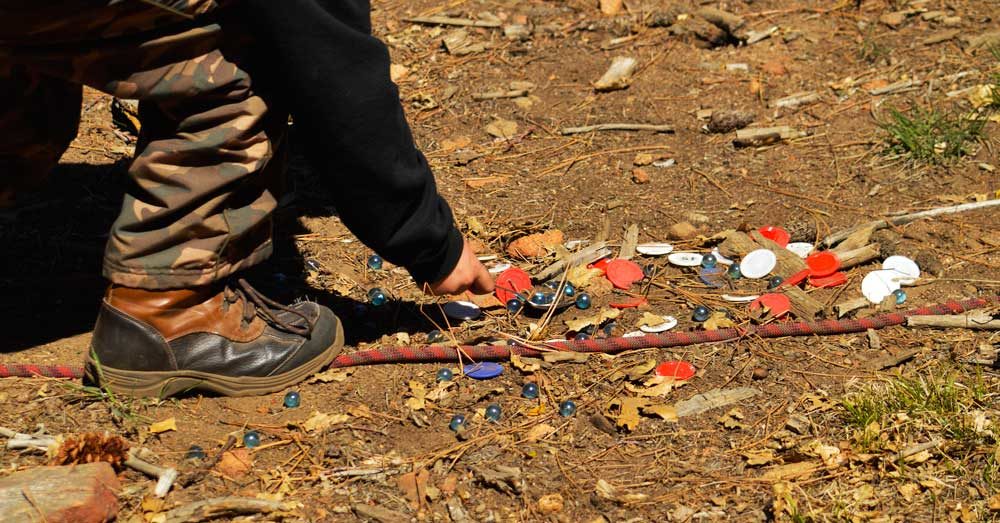
Teaching tools for the forest floor
Required Props
Here at High Trails, we require our staff to make or provide a certain number of their props. Why? Well, in the balance between facilitator and educator, required props ensure a basic standard of educational experience. Education benefits from a certain level of consistency, and requiring some props for each class ensures one degree of consistency. Some of these props we provide, others we require instructors to provide, and some we require instructors to make.
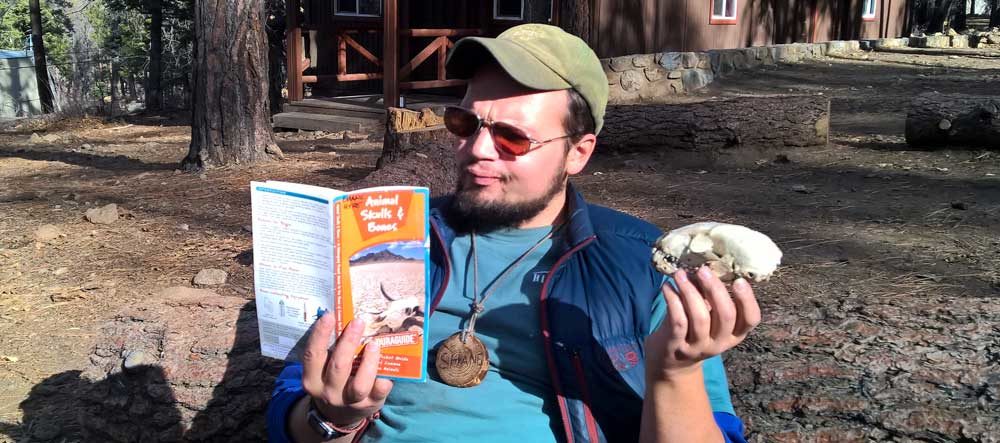
The author having a conversation with a prop
Supplemental Props
Once an instructor has demonstrated competency with the basic required teaching tools, they are encouraged to bring in those extra props that add to their teaching/facilitation style. First, let us consider the practical supplemental props. Ranging from rock collections to pictures (both photographs and drawn illustrations), from bones to nature guides, practical supplemental props enhance the experiential aspect of student learning.
Occasionally, an educator gets so excited about injecting their own props, they need to pause and consider how to use it effectively. For example, the Audubon Society publishes their famous birding guide, but while the images are famous and beautiful, giving a 5th grade student the whole guide is overwhelming. We encourage our instructors to experiment with what practical supplemental props work best for the student experiment.
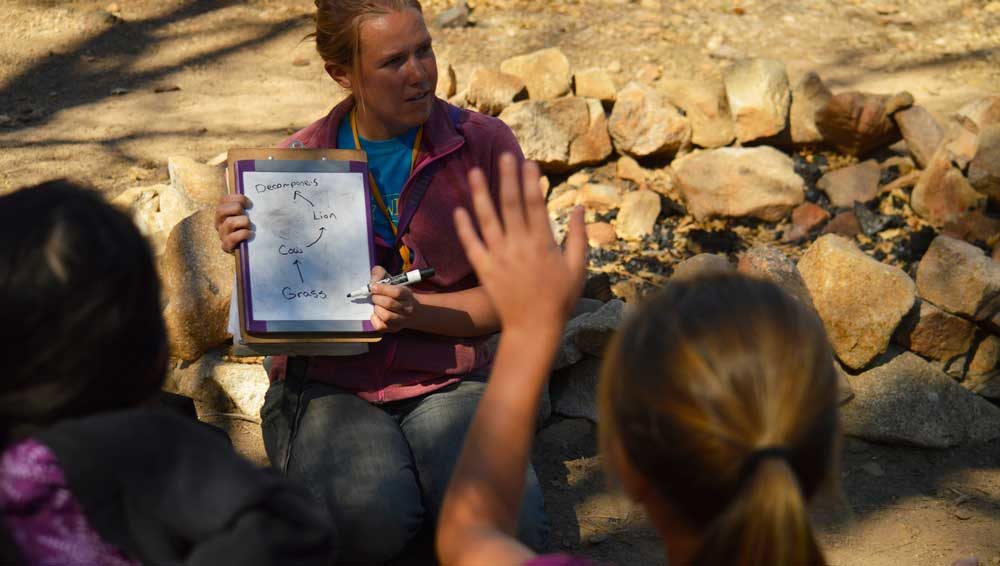
The essential essence of the…whiteboard
There are also the versatile supplemental props which can be reused, repurposed, and used for many different aspects of teaching. Perhaps the most versatile prop is the instructor dry erase board (or whiteboard). This tool is so versatile that to think of teaching without it is a challenge to imagine. However, while the ubiquitous whiteboard can be used to display vocabulary, images, and graphing, a growing instructor can see the benefits of preparing some reusable visuals ahead of time. Laminated charts, graphs, and diagrams can be used to save time and effort and allow the student participatory learning.
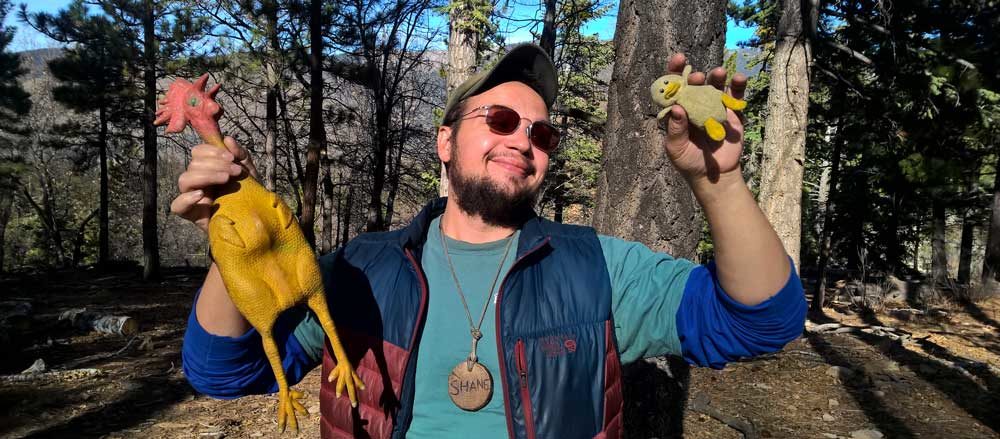
The author having more conversations with props?
Finally, perhaps the most popular, the personal supplemental props – the talking item, the thematic stuffed animal, the character that the group cheers for and encourages their participation. The personal props bridge the passion of the instructor with the enthusiasm of their students. It appears like a small gesture, but adding personal props enhance the passion of teachers and students.
To sum it all up – teachers need educational props.
Here at High Trails, we introduce our staff to the importance of teaching props – the practical, the versatile, and the personal. We use our professional community to get our staff sharing their ideas and techniques, their styles and tools, so that we might better learn how we can all fit together on one happy planet.
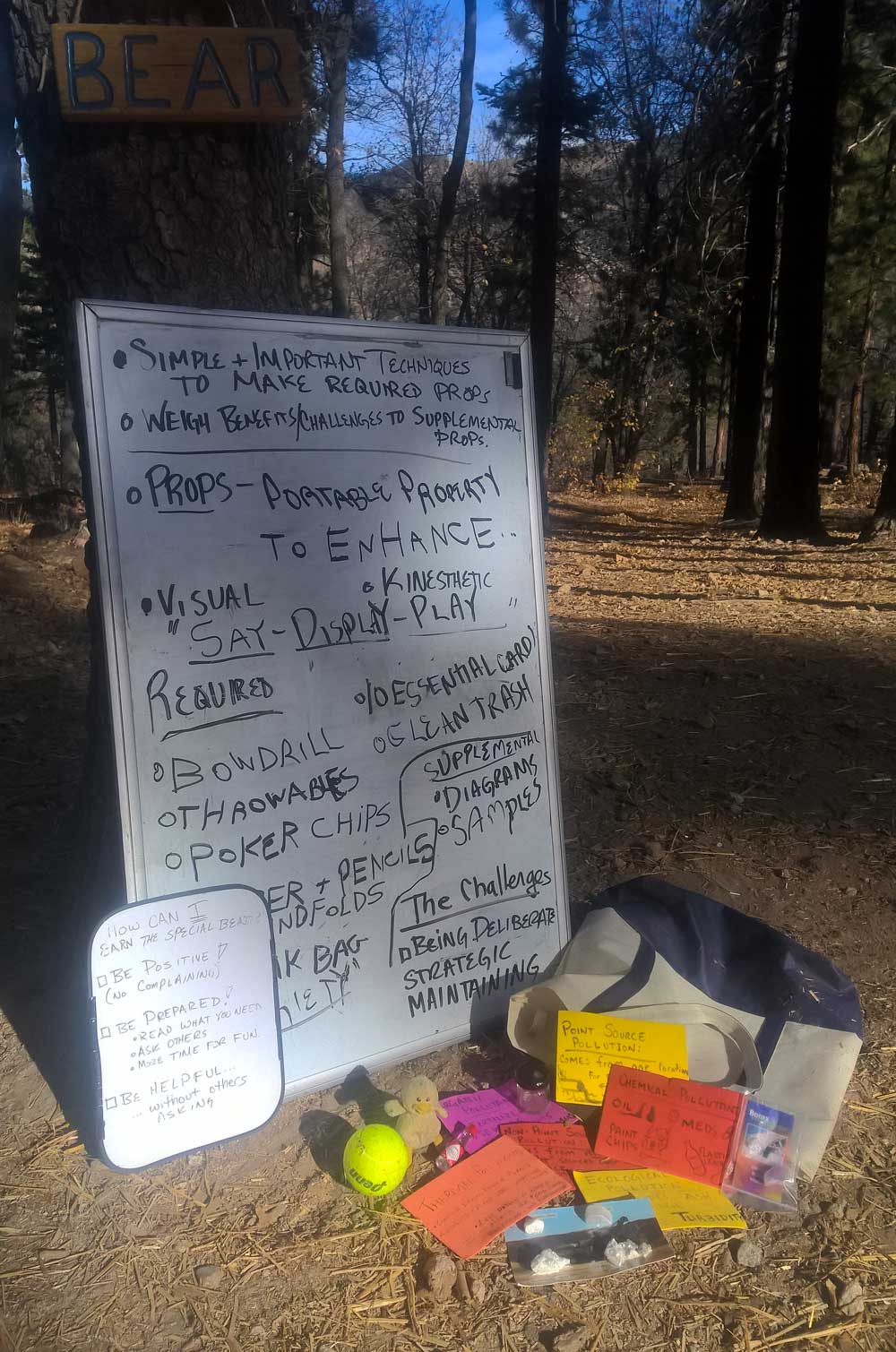 At High Trails Outdoor Science School, we literally force our instructors to write about elementary outdoor education, teaching outside, learning outside, our dirty classroom (the forest…gosh), environmental science, outdoor science, and all other tree hugging student and kid loving things that keep us engaged, passionate, driven, loving our job, digging our life, and spreading the word to anyone whose attention we can hold for long enough to actually make it through reading this entire sentence. Whew…. www.dirtyclassroom.com
At High Trails Outdoor Science School, we literally force our instructors to write about elementary outdoor education, teaching outside, learning outside, our dirty classroom (the forest…gosh), environmental science, outdoor science, and all other tree hugging student and kid loving things that keep us engaged, passionate, driven, loving our job, digging our life, and spreading the word to anyone whose attention we can hold for long enough to actually make it through reading this entire sentence. Whew…. www.dirtyclassroom.com

Comments are closed.